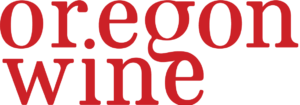Putting Your Vineyard on the Map: Using Spatial Data to Improve Efficiency
Vineyard management often takes a one-size-fits-all approach because growers don’t have the right tools to detect and respond to differences across their vineyards – whether in soil conditions, vine health, or grape production. As resources like land, water, and labor become increasingly scarce, vineyard managers need smarter methods to maximize their efficiency. The key challenge has been measurement: How can growers identify where and how much variation exists within their vineyards? Without being able to measure and visualize these differences, it’s nearly impossible to manage them effectively.
The MyEV platform offers a possible solution. This mapping tool helps growers collect, analyze, and visualize data about different areas of their vineyard. Armed with this detailed information, they can adjust their farming practices – like irrigation or fertilization – based on the specific needs of each vineyard section. We’ll demonstrate MyEV’s practical benefits using a real-world case study showing how it can make vineyard operations more efficient.
View the Session Recording
More Resources
Speaker Bios
Hans Walter-Peterson, Senior Extension Associate, Cornell Cooperative Extension
Hans Walter-Peterson is a Senior Extension Associate with Cornell Cooperative Extension, responsible for viticulture extension in the Finger Lakes region of New York. He conducts applied research and advises the region’s grape growers on a wide range of topics such as pest management, vine health and productivity, digital viticulture, soil health, and much more. Prior to joining the Finger Lakes Grape Program in 2007, he was the viticulture extension specialist for the Lake Erie Regional Grape Program in Fredonia, NY for six years. In recognition of his research and extension work on behalf of the industry, he received the ‘Research Award’ from the New York Wine & Grape Foundation in 2020.
Hans received his Bachelor of Arts degree in Biology from St. Olaf College in Northfield, MN in 1990, and his Master’s degree in Viticulture from the University of California – Davis in 2001. He is currently working on his Ph.D. in viticulture at Cornell University.
Austin Kraemer (moderator), Farm Manager, Kraemer Farms
Austin Kraemer is a 4th generation farmer from the Willamette Valley in the Silverton area. Born into a family legacy of agriculture, Austin, alongside his brother Ben, manages Kraemer Farms vineyard operations. Stepping into his father’s boots, Austin took on the crucial responsibility of overseeing the existing vineyard acres while establishing a few hundred more acres. Austin’s journey in agriculture led him to OSU where he pursued a degree in Agricultural Business Management. Eager to broaden his knowledge, he embarked on an insightful internship with E.J. Gallo Winery. After, Austin returned to his roots, Kraemer Farms in the Willamette Valley. With a focus on winery relations and a vision for vineyard expansion, he played a pivotal role in shaping the vineyards’ operations trajectory.
Austin’s commitment to fostering strong relationships within the winemaking community and expanding the vineyards underscored his dedication to both the family legacy and the thriving wine industry in the region. Austin Kraemer, shares his life on the family farm with his wife Destinee, their first child Claire in February, and his dog, Chief. Beyond the demands of the vineyard, he is a fanatic gardener and avid Outdoorsmen, with a fondness for raising livestock. His goal is to continue an ongoing legacy of wine growing in the Willamette valley while contributing to the advancement of the industry for the betterment of the businesses, people, and the environment.

Leave a comment